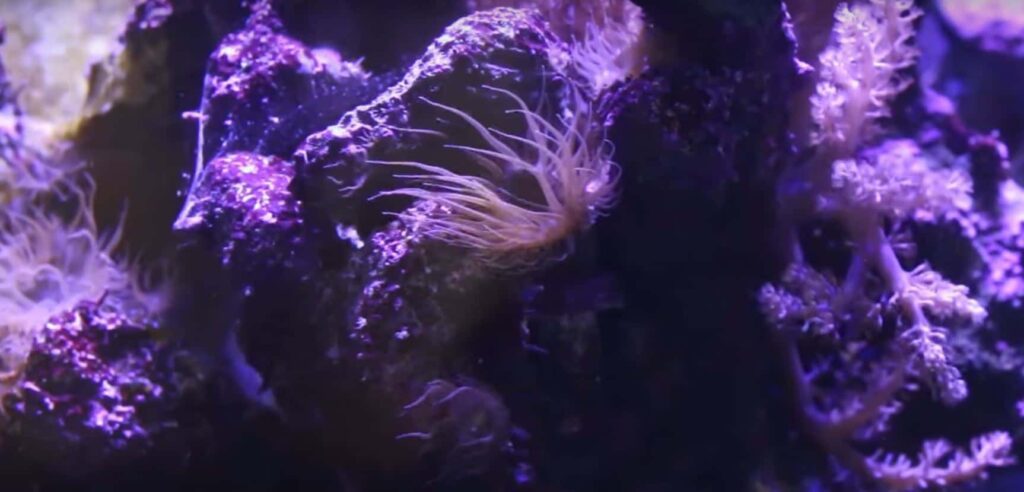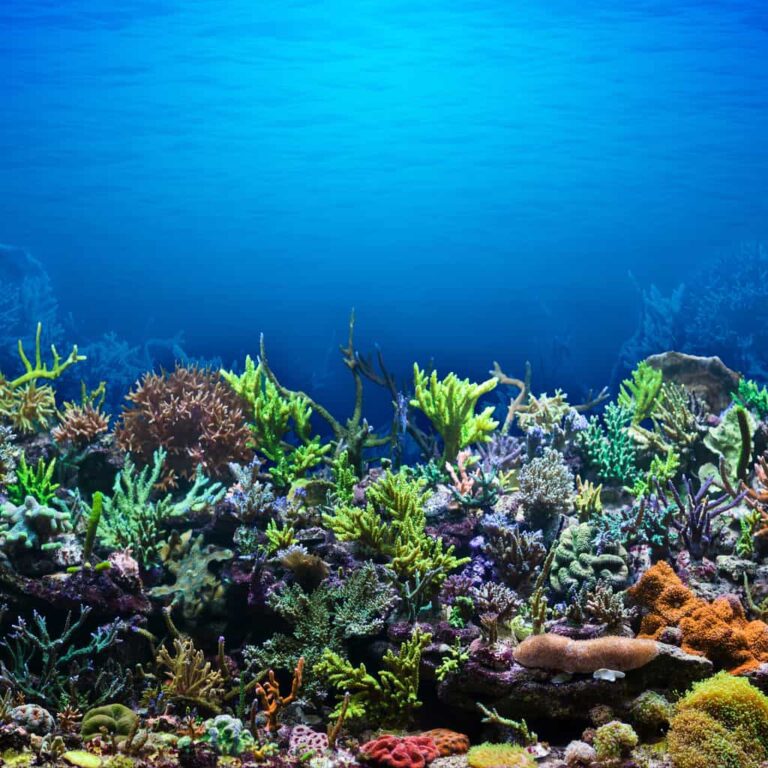Aiptasia Anemone; an enemy to all aquarists.
It reeks of despair and destruction. For this blood-thirsty parasite, your habitual aquarium is an oasis. Their ruthless assault is enough to drive any tank enthusiast nuts.
As an enemy, it attacks in large numbers and surrounds the whole tank, harming all its habitat. These vicious creatures multiply like crazy and can take over the tank within a short time.
That is why we are here to help you, trust us; you need it in defending your aquarium.
Just calmly and carefully go through this guide on how to eliminate Aiptasia Anemone from a saltwater aquarium and voila, your tank’s safe. So, let’s get to it.

How to Identify the Enemy
First & foremost, you need to recognize Aiptasia Anemone.
These anemones resemble miniature palm trees. They have a polyp body and an oral disc, which is bordered by tentacles.
However, there are different species of Aiptasia. Some are transparent, whereas others are tan or light brown most of the time. Then, their size ranges from a few centimeters to a few inches.
Often, Aiptasia withdraws into tiny holes on your reef rocks, and their tentacles can sting fish, corals, and crustaceans in your aquarium. Not a pretty scene, let us assure you.
How to Eliminate the Enemy: Get Rid of Aiptasia Anemone
In the aquarium, Aiptasia can migrate to reef rocks or coral colonies. Generally, they wait for a sustainable situation to increase their species.
Aiptasia sea anemones compete for food and space in your aquariums, which leaves your other marine species vulnerable, but no worries, there are some natural and artificial removal solutions.
- Chemical Methods
- Introducing Predators
- Osmotic Shock
1. Eliminate with Chemical Methods
As the enemy is vicious, you need an ever more vicious strategy to deal with it.
Chemicals solutions or liquids are an effective method to eradicate Aiptasia Anemones. Hence, it is easy to find many types of liquids you can have as your choice of weapon. First, know what to use, then we will get to the actual solutions.
- First, you need a syringe and a needle.
- Then, you fill it with the necessary solutions.
- Next, inject it straight into the trunk of an anemone.
Note: If you are facing corrosive chemicals, always exercise precaution and wear protective gloves and glasses.
All Effective Chemical Solutions
- Lemon Juice Essence (Bottled)
For immediate results, this citrus solution works best. It is easy and safe to use in a saltwater aquarium. Moreover, it is quite affordable. For each anemone, use a syringe (0.5) and inject it into the predator’s base.
- Sodium Hydroxide
For a guaranteed kill, this particular item is strong if you mix it in a condensed solution. First, you need to take the rock out then dribble the mixture over the Aiptasia. This gives a mortality rate of 100 percent.
Whereas if an anemone’s foot is entrenched in a fissure, its mortality rate decreases to 50 percent. So, make sure your target is on point.
Also, you need to wear protective gear while using it as it can damage your skin.
- Calcium Hydroxide
It is the most common item in a condensed solution for injecting.
However, it needs to be appropriately done for efficiency. Often, the kill rate becomes low.
Besides, if you attack too many anemones at the same time, it creates a problem in the tank. Excessive calcium hydroxide alters the level of pH in the tank.
Therefore, it has many risks if not performed correctly.
- Hydrogen Peroxide
This item acts rather quickly in a solution. Do not wait or delay the process. Instead, directly inject from an intact bottle, as it starts eliminating swiftly and efficiently.
2. Eliminate by Introducing Predators
For aquarists who prefer letting nature deal with these pesky anemones, there are several marine species that can devour your enemy with pleasure.
Shrimps
Lysmata wurdermanni, also known as the Peppermint shrimp, is the first pick for most aquarists when dealing with Aiptasia Anemones as it preys on these parasites.
However, many other species, despite their inaction towards anemones, are often sold as the real peppermint shrimp.
Therefore, you need to be aware of Camelback shrimp (Rhynchociemetes uritai) as it completely ignores anemones. Also, Lysmata californica is named peppermint shrimp; thus, it can get confusing. Make sure not to choose this as it is native to coastal areas of North-West America and will not prey on Aiptasia Anemone.
Puffers
The pointy-nosed species of Canthigastrinae sub-family (tobies) are more suitable than guinea fowl puffer or brown white-spotted. The latter has a growth rate inappropriate for the reef tank.
File fishes
From the Indo-Pacific region, the Bristle-tail filefish.
Butterflyfishes
Raccoon (Chaetodon lunala), Auriga (Chaetodon Auriga), long-nosed (genus Forcipiger species), Klein’s (Chaetodon Kleini), the copper band (Chelmon rostratus), and teardrop (Chaetodon unimaculatus)
Nudibranches
A highly popular choice amongst veterans is some sea slugs scientifically known as the Berghia, as they are effective and entirely safe to use. They solely prey on Aiptasia; however, they die without their presence. Therefore, you need to ensure the survival of these nudibranchs.
Hermit crabs
Common white-spotted or red-legged hermit crabs do not cause any disturbance to the tank-occupants and eats algae.
3. Eliminate by Osmotic Shock Therapy (OST)
Natural predators sound reasonable; however, there’s an issue of their survival. Thus, if there’s any concern about adding animals in your saltwater aquarium, there’s another option available.
Hypo salinity or OST is effortless and works well but not effective for saltwater aquariums.
However, there are some solutions such as Elimi Aiptas by Tropic Marin, Aiptasia Awat, and ChemMarin’s Stop-Aiptasia, which are specifically created to pursue and eradicate these anemones. Besides, they post no harm or threat to your reef tank.
Additional Tips
- Using hot water or bleach and copper is not suggested because they will not work well in ridding Aiptasia.
- When using animals, ensure their survival and food sources once all Aiptasia anemone are consumed.
- Always wear clean gloves and protective glasses while dealing with chemical solutions.
Final Thoughts
In this guide on how to eliminate Aiptasia Anemone from saltwater aquarium, we provided you with three methods.
Once you equip yourself with one of the weapons mentioned above, you can hack and slash your way through these mangy pests.
Hopefully, this article has prepared you with enough arms in dealing with these marine enemies.






